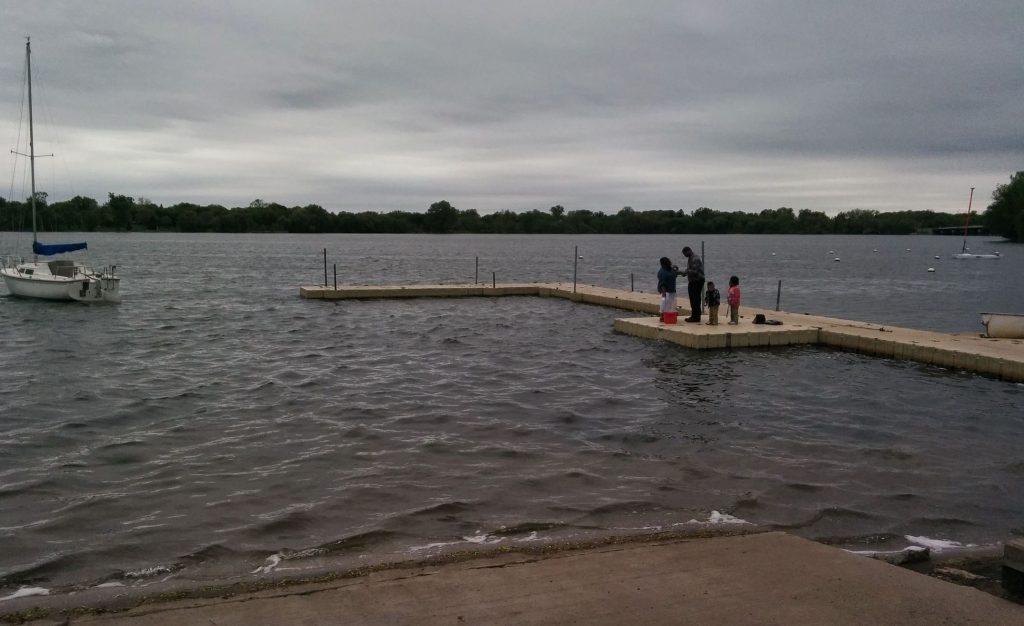
Lake Nokomis, formerly called Lake Amelia (1819-1910), is a beautiful lake and park bordered by the Hale, Diamond Lake, Wenonah and Keewaydin neighborhoods in South East Minneapolis. It is named after the grandmother of the character Hiawatha in Henry Wadsworth Longfellow’s epic poem, The Song of Hiawatha. At the time of renaming, the lake was to become a reservoir to ensure the continuous flow of water over Minnehaha Falls.
In 1914, dredging that was mapped out in 1910 by Theodore Wirth began in earnest. The dredging and reshaping of the lake reduced the lake’s surface area from 300 acres to 200 acres and increased its depth from five feet to an average of 15 feet. The 2.5 million cubic yards of dredged material was used to fill the marsh and wetlands that surrounded the lake. When sand was found, it was removed to create a swimming beach on the northwestern shore that at one time was the site of an enormous water toboggan.
In 1917 dredging was complete, but the fill would continue to settle into the 1930s and required periodic grading to be done. Additional modifications to the lake were made in 1945 to protect it from garbage contaminated water flowing into it from Mother Lake.
It wasn’t until 1973 that concerns about water quality led to studies of the current state of the City’s lakes. The study found that the filling and development of land that previously was wetlands and marshes filtering water before it entered the lake led to the degradation of water quality in the city as a whole.
In 1996, the park board attempted to recreate a portion of the lost wetland system with the creation of an 8 acre marsh on the southwest bay of the lake. This marsh was expanded and modified to include a settling pond and grit chamber in 2001 along with the creation of two additional marshes containing settling ponds and grit chambers in the same year. The most recent modification to the lake was the installation of an inflatable weir to prevent Minnehaha Creek from overflowing into Lake Nokomis in 2002. Additional historical narrative about the lake can be found in the Minneapolis Park and Recreation Board publication: Parks, Lakes Trails and Much More.
Contact us for more information.